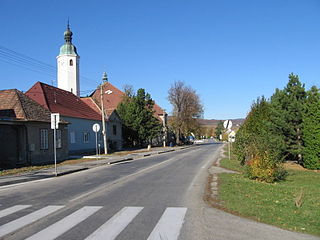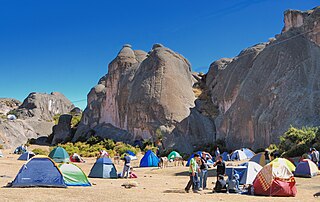
Laetitia Marie Laure Casta is a French supermodel and actress.

Mestizo is a racial classification used to refer to a person of a combined European and Indigenous American ancestry. The term was used as an ethnic/racial category for mixed-race castas that evolved during the Spanish Empire. Although, broadly speaking, mestizo means someone of mixed European/Indigenous heritage, the term did not have a fixed meaning in the colonial period. It was a formal label for individuals in official documentation, such as censuses, parish registers, Inquisition trials, and other matters. Priests and royal officials might label individuals as Mestizos, but the term was also used for self-identification.

Casta is a term which means "lineage" in Spanish and Portuguese and has historically been used as a racial and social identifier. In the context of the Spanish Empire in the Americas it also refers to a now discredited 20th century theoretical framework which postulated that colonial society operated under a hierarchical race-based "caste system". From the outset, colonial Spanish America resulted in widespread intermarriage: unions of Spaniards, Amerindians, and Africans. Basic mixed-race categories that appeared in official colonial documentation were mestizo, generally offspring of a Spaniard and an indigenous person; and mulato, offspring of a Spaniard and a black African. There were a plethora of terms for mixed-race persons of indigenous and African ancestry used in 18th-century casta paintings yet they are not known to have been widely used officially or unofficially in the Spanish Empire.

Portuguese wine is the result of traditions introduced to the region by ancient civilizations, such as the Phoenicians, Carthaginians, Greeks, and mostly the Romans. Portugal started to export its wines to Rome during the Roman Empire. Modern exports developed with trade to England after the Methuen Treaty in 1703. From this commerce a wide variety of wines started to be grown in Portugal. And, in 1758, one of the first wine-producing regions of the world, the Região Demarcada do Douro was created under the orientation of Marquis of Pombal, in the Douro Valley. Portugal has two wine-producing regions protected by UNESCO as World Heritage: the Douro Valley Wine Region and Pico Island Wine Region. Portugal has a big variety of local kinds, producing a very wide variety of different wines with distinctive personality.

Castizo is a racial category used in 18th-century Colonial Spain to refer to people who were three-quarters Spanish by descent and one-quarter Amerindian. The feminine form of the word is castiza. Nowadays the term castizo also came to mean mixed-race people with light skin, in comparison to mulattos, pardos, mestizos and coyotes who would be mixed-race people with dark skin.

847 Agnia is a minor planet orbiting the Sun. It is approximately 28 kilometers in diameter.

The Roman Catholic Diocese of Ajaccio is a diocese of the Latin Rite of the Roman Catholic Church in France. The diocese comprises the whole of the island of Corsica.

Častá is a village and municipality in western Slovakia in Pezinok District in the Bratislava Region, on the foothills of the Little Carpathians. The village is best known for the Červený Kameň Castle, which is above the village.
7803 Adachi, provisional designation 1997 EW2, is a stony Agnia asteroid from the middle region of the asteroid belt, approximately 6.4 kilometers (4 miles) in diameter. The asteroid was discovered on 4 March 1997, by Japanese amateur astronomer Takao Kobayashi at the Ōizumi Observatory in central Japan. It was named for Japanese amateur astronomer Makoto Adachi. The S-type asteroid has a rotation period of 5.2 hours.

San Pedro de Casta District is one of thirty-two districts of the province Huarochirí in Peru. The town of San Pedro de Casta is known for its proximity to Marcahuasi, and receives the majority of its attention from this tourist attraction.

Agnia is a village in south-central Ivory Coast. It is in the sub-prefecture of Tiémélékro, M'Batto Department, Moronou Region, Lacs District.

Casta Diva is a 1935 Italian musical drama film directed by Carmine Gallone and starring Mártha Eggerth, Lamberto Picasso and Gualtiero Tumiati. The film won Best Italian Film at the 1935 Venice International Film Festival. An English-language version The Divine Spark was made at the same time, also directed by Gallone and starring Eggerth. Gallone remade the film in 1954 in Technicolor.

National Route 25 is a 534-kilometer-long paved highway that runs through the center of Chubut Province, Argentina. It extends from the juncture with National Route 40 in Tecka to the bridge on the Chubut River in the city of Rawson. The highway crosses the Patagonian Steppe, joining sparsely populated areas.

Agnia is a genus of longhorn beetles of the subfamily Lamiinae, containing the following species:

Agnia (Agne) Olegovna Ditkovskyte, after marriage — Chadova, born 11 May 1988, Vilnius, Lithuanian SSR) is a Russian actress of a Lithuanian origin.
Agnia eximia is a species of beetle in the family Cerambycidae. It was described by Francis Polkinghorne Pascoe in 1860. It is known from Moluccas.

Agnia pulchra is a species of beetle in the family Cerambycidae. It was described by Per Olof Christopher Aurivillius in 1891. It is known from the Philippines. It contains the variety Agnia pulchra var. sulphureomaculata.

Cinderella is a 2012 Russian romantic comedy film directed by Anton Bormatov. The picture is a modernized version of the Charles Perrault tale.
Leila bint el agnia is an Egyptian film released in 1946 and starring its director-producer Anwar Wagdi and his then-wife Leila Mourad.
















